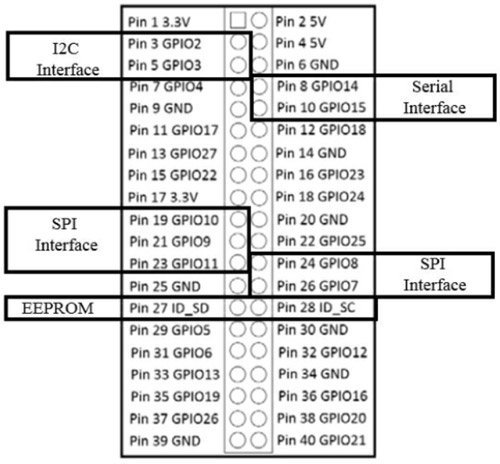RPI Zero 2W GPIO Pinout
GPIO pins are general-purpose pins that can be used to switch external devices on and off, such as LEDs. The GPIO header on your Raspberry Pi has a total of 40 GPIO pins. On the Raspberry Pi Zero W, pins 1 and 17 supply 3.3 volts; pins 2 and 4 supply 5 volts, while pin 9, 25, 39, 6, 14, 20, 30, and 34 are all attached to ground. Here, you can see a list of all 40 pins of Raspberry Pi Zero W and their connection to Raspberry Pi zero. The remaining pins have different functions. Each pin on the 40-pin header has a specific purpose. In the table below, the various categories are described.

| Pin Type | GPIO pins | Description |
| PWM pins | GPIO12, GPIO13, GPIO18, GPIO19 | Used for Pulse Width Modulation |
| SPI pins | SPI0: GPIO9 (MISO), GPIO10 (MOSI), GPIO11 (SCLK), GPIO8(CE0)/ GPIO7(CE1) SPI1: GPIO19 (MISO), GPIO20 (MOSI), GPIO21 (SCLK), GPIO18 (CE0)/ GPIO17(CE1)/GPIO17(CE2) |
Used for Serial Peripheral Interface |
| I2C Pins | Data: (GPIO2), Clock: (GPIO3) EEPROM Data: (GPIO0), EEPROM Clock: (GPIO1) |
Used for Inter-Integrated Circuit communication |
| UART Pins | TX: (GPIO14) RX: (GPIO15) |
To communicate between two microcontrollers or the computers. |











